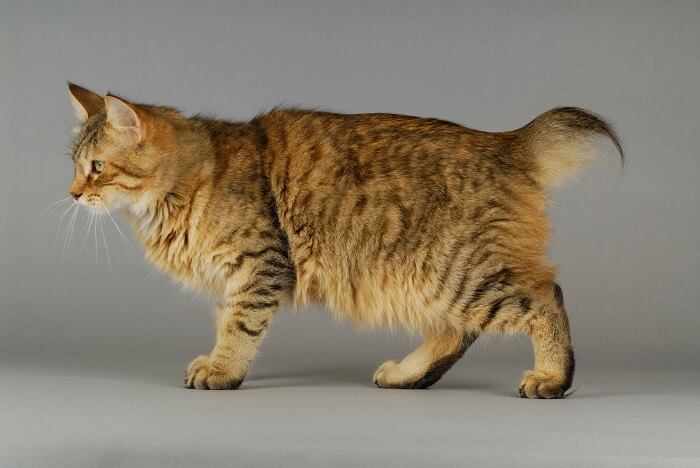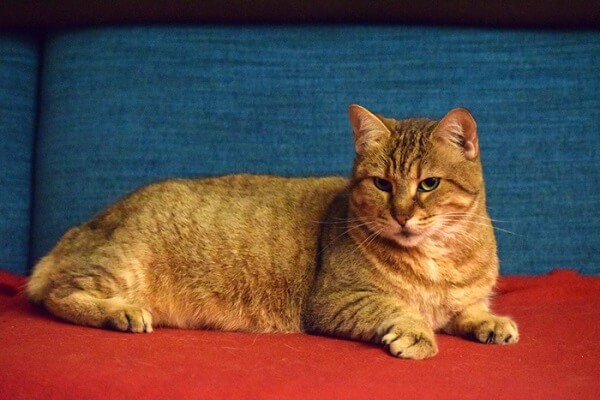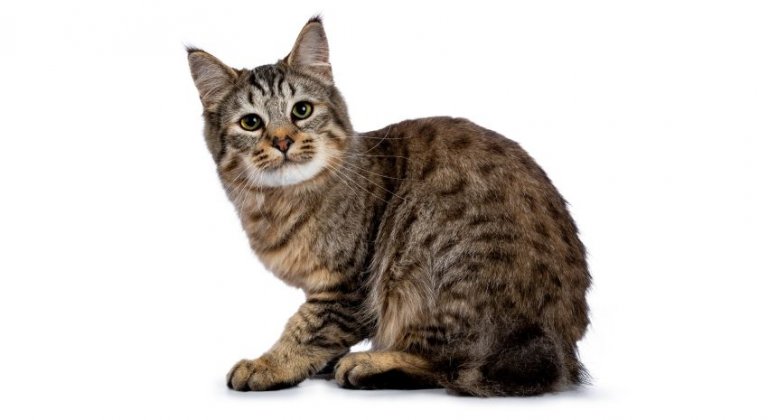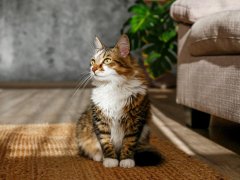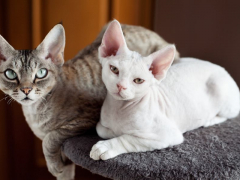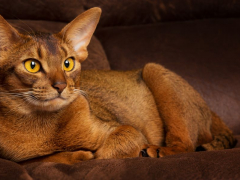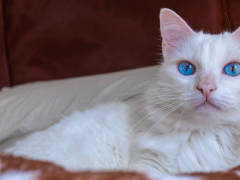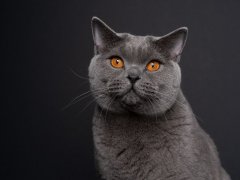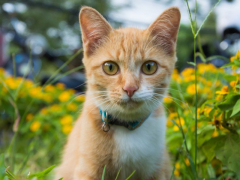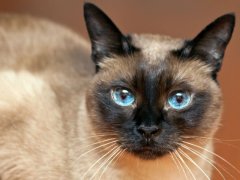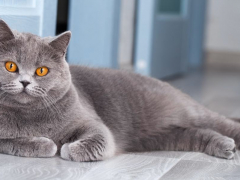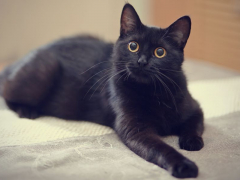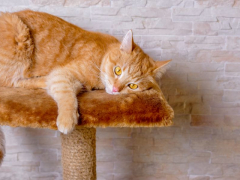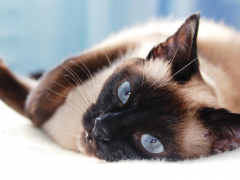Personality and Temperament
With a short tail and a wild appearance, the Pixie-Bob cat is certain to captivate your imagination while simultaneously capturing your heart. Even though these cats appear exotic, they are now 100% domestic: DNA testing has shown that contemporary Pixie-Bob cats have no wild bobcat blood.
Pixie-Bob cats are extremely friendly and sweet natured, with a fondness for all family members including kids, other cats, and well-behaved dogs. Speaking of dogs, many families who count Pixie-Bob cats as members compare them to canines in terms of personality. These kitties are loyal to a fault, and some of their favorite games are similar to the ones dogs enjoy. For example, Pixie-Bob cats love to play fetch, they enjoy walking on leashes once they learn how, and unlike most cats, they have a tendency to appreciate the opportunity to ride in the car alongside their family members.
If you're looking for a big, playful cat with an unusual appearance and an outstanding personality, the Pixie-Bob may be the companion you've been searching for.
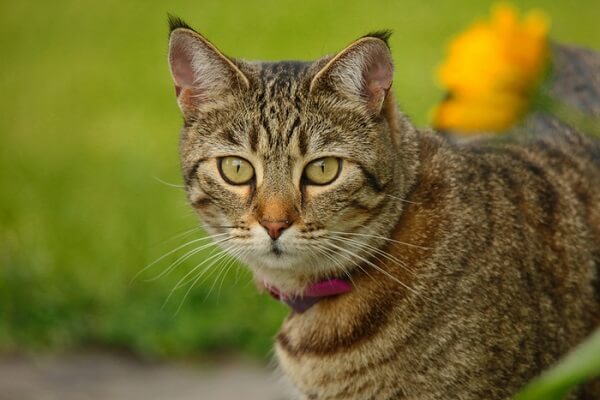
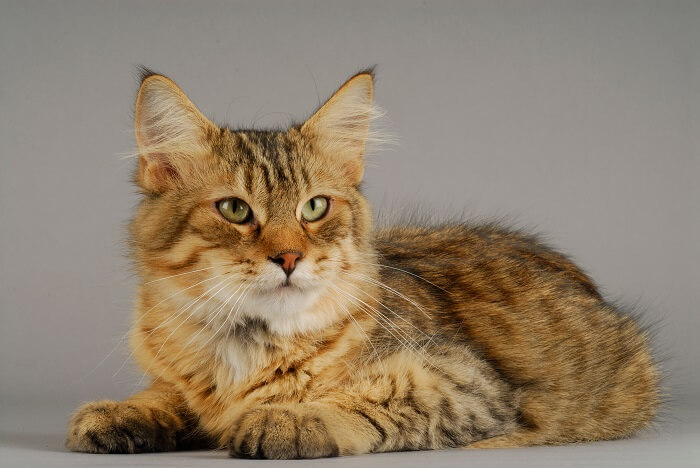
Care
Nutrition
Grooming
Exercise
Health
Pixie-Bob cats can be quite large, meaning they often need more calories than the average cat. These kitties thrive on a high-quality diet that's high in protein and low in carbohydrates, with real meat or fish as the primary ingredient.
Pixie-Bob cats tend to have thick, luxurious coats. While they take care of daily grooming on their own, these kitties benefit from once or twice weekly brushing sessions aimed at removing loose hair that can contribute to hairballs and contribute to excess shed fur on your furniture and clothing.
You might want to teach your cat to accept toothbrushing from a young age, and you may also wish to teach them how to have their nails clipped. Regular nail clipping will save your furniture, your clothing, and your skin. Even though these cats don't mean to cause damage, their size and high level of activity mean that accidents are likely to happen. Regular nail trimming is a big help.
Even though Pixie-Bob cats have a strong appreciation for comfortable beds and naptime, they spend their waking hours engaged in physical activity aimed at keeping you entertained while satisfying their natural urge to run, jump, and climb. It's important to provide plenty of enrichment for these cats. Even if you can't build a catio outdoors, you'll want to provide your Pixie-Bob cat with at least one big, strong cat tower that's equipped with a large platform on top.
You'll also want to provide scratching posts and an ample supply of toys. Focus on toys that satisfy your cat's curious nature as well as those that are durable enough to withstand a big cat's undivided attention.
Pixie-Bob cats typically enjoy good health. Some males have cryptorchidism – an issue that can be resolved with surgical neutering, but that renders a cat unsuitable for showing as an intact male.
These kitties are naturally big, however if they become lazy, they can be prone to obesity. It's very important to provide opportunities to exercise and to ensure that the diet contains no excess fillers and promotes good health.
History
As rumor has it, the Pixie-Bob cat breed got its start when a barn cat and a coastal bobcat had a litter of kittens together. Even though today's Pixie-Bob cats have no while Bobcat DNA, their size suggests that there might be something to this old story.
The first records of Pixie-Bob cats come from Carol Ann Brewer of Mount Baker, Washington. In 1985, she bought a male cat with a short tail, a spotted coat, and polydactyl paws. The following January, she rescued a starving male cat that weighed in at 17 pounds even though it was skin and bones. This cat, named Keba, also had a bobtail and was rumored to have been produced as a result of a meeting between a domestic female cat and a male Bobcat.
Keba mated with a neighbor's brown tabby female cat and in April 1986, that Queen had kittens. Brewer One of the females and named her "Pixie." The following year, Pixie became a founding member of the Pixie-Bob breed.
For the next few years, Brewer searched for cats that were believed to be the result of naturally occurring meetings between domestic cats and wild bobcats. She added 23 of them to her breeding program in all, using the term "Legend cats" as a trademark. Other breeders joined the effort, collaborating with Brewer to form a broad genetic pool. Eventually, today's Pixie-Bob breed was fully developed.
Carol Ann Brewer led efforts to register the new breed. The International Cat Association granted recognition in 1993 as part of the exhibition category. In 1996, TICA granted new breed and color status. In 1998, the Pixie-Bob cat was finally granted championship status.
